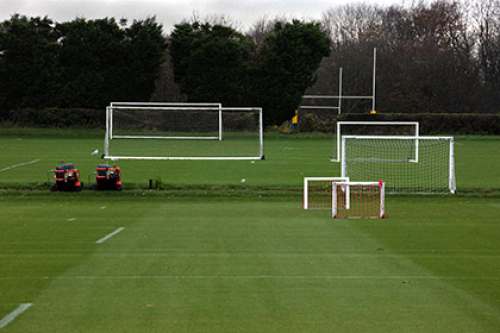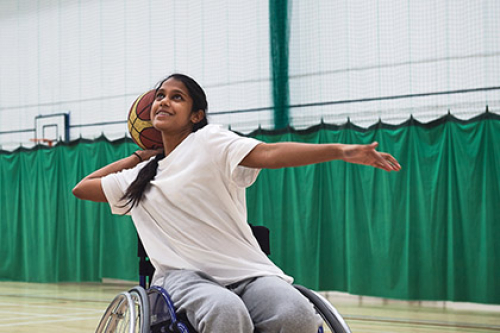Not everyone is returning though, and not all are so comfortable doing so, with only 61% of respondents feeling comfortable using indoor facilities other than gyms, fitness classes and swimming pools.
And the levels of comfort for these settings drop further for 16-34-year-olds, those in lower socio-economic groups, people with mental health conditions or illnesses and those without access to private outdoor space.
Alongside this, those who have found it harder to remain active throughout the pandemic are continuing to struggle.
People aged 55+, those with long-term health conditions or illnesses and people from lower socio-economic groups are more likely to not have returned to activity since restrictions were eased and then lifted.
And Lisa is encouraging the sector to continue their efforts to make the return to play accessible to all.
“Some groups are at real risk of getting left behind,” she added.
“It's concerning that out of those surveyed, a third of over 55s are doing zero days of activity a week.
“Activity levels are also low for disabled people, those with long-term health conditions and those on low incomes.
“We need to keep thinking about how to help everyone stay active, and right now that means continuing to signpost to ways to be active at home so people don't lose out on all the benefits to their physical and mental health.”
The picture looks better for children, though, as 49% of respondents with children under 16 reported their child/ren being more active than this time last year and just 20% saying they were less active.
This marks a notable swing from the results in January, with a national lockdown in place, when only 26% said their child/ren were more active and 44% saying they were less active than the same time last year.
A closer look at the results
- The numbers of people taking part in activities including gym, fitness or exercise classes away from home (17%), swimming (15%) and team sports (8%) are up on April this year, and on this time last year.
- Data from our Moving Communities participation tool shows throughput at public leisure facilities is currently at 66.47% of the 2019 pre-pandemic level, and down from the 76.52% we saw in May this year, when indoor group exercise returned.
- Moving Communities data also shows that people aged 16-44 are most likely to have returned, indicating public leisure facilities are important settings for young people to get active.
- Women, people aged 16-34, people in higher socio-economic groups and those without long-standing physical or mental conditions or illnesses have been more likely than their counterparts to participate in gym, fitness or exercise classes away from home, and swimming.
- Worry and anxiety persists, with 40% of people agreeing they worry about leaving home to exercise or be active – a similar level to this time last year but down from 51% in January.
- A higher percentage of women (45%), 16-34-year-olds (51%), people with children (47%) and people with a long-standing condition or illness (50%) worry about leaving home to exercise or be active, than average.
- Challenges to being active remain similar with feelings of being ‘too tired’/‘lacking energy’ (35%) and not being ‘fit enough’ (25%) consistently being selected by more people than other options such as worries over coronavirus (18%) or concerns over getting ‘pinged’ (12%) – showing people will continue to need support to build motivation and confidence to gradually build fitness levels.
- Since mid-June 2020, when shops and other activities began to reopen and there was an increase in the percentage of people doing 30+ minutes of physical activity on ‘some’ (1-4) days a week, and a decrease in the levels of people doing 30+ minutes on ‘most’ (5-7) days, the levels doing activity on zero (ranging between 17 and 21%), some (52-56%) or most (24-29%) days have followed fairly flat trends.
- The percentage of people walking (60%), running or jogging (20%) or cycling (15%) – activities that have been permitted throughout the pandemic – continues to hold steady.
- An increase in the percentage of people walking or cycling for travel or utility purposes, and a decrease in the percentage of walking or cycling for leisure, fitness or recreation, compared to late February and early March this year, suggests people returning to workplaces and more regular everyday activities are shifting their activity habits.
- There was a seven percentage point increase in people reporting they noticed coronavirus safety measures at indoor facilities such as gyms, fitness centres and swimming pools, compared to April. This could be due to greater differences in measures between facilities, meaning people were actively looking for what was required of them, or the public debate about the removal of restrictions on 19 July heightened people’s awareness of measures still in place.
Data sourced from wave 19 of our Physical Attitudes and Behaviours Survey, carried out by Savanta ComRes on 23-26 July - this survey uses different methods and measures to the Active Lives surveys and data should not be compared.
Supplementary data from Moving Communities, Public Leisure Facilities, Covid-19 recovery analysis, week 15 after reopening, 19-25 July.




